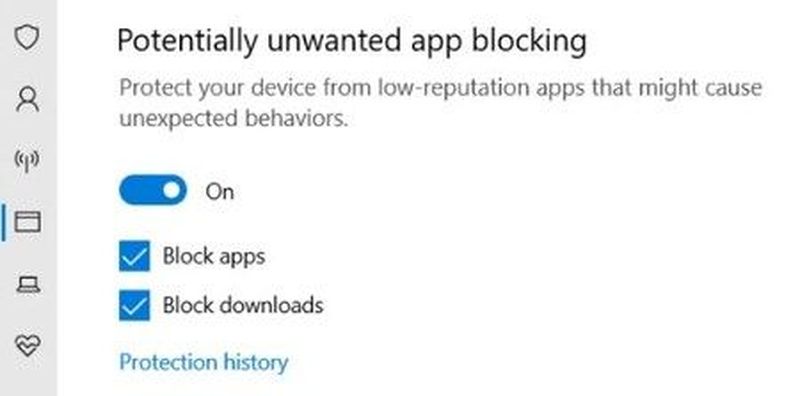Windows 10 will start automatically blocking potentially unwanted programs starting this month, through the Microsoft Defender antivirus and the Microsoft Edge browser.
Windows 10 will start blocking unwanted apps
The function serves for those applications known as PUPs, a term used to refer to programs that can be considered malicious or unwanted according to certain criteria.
The feature serves for those applications known as PUPs, a term used to refer to programs that may be considered malicious or unwanted based on certain criteria.
Legitimate software is classified as a PUP is often due to bad practices of its developer (misleading distribution methods, poor privacy, excessive inclusion of ads) or controversial functionality (alteration of system settings, crypto mining).
How to configure Windows 10 app blocking?
Microsoft’s operating system has an option in the security section called “Block potentially unwanted applications”, which has been disabled by default since its launch.
However, Microsoft is now going to enable that option “to make it easier for the user to keep their systems running at peak performance,” the company announced in a support bulletin this week.

The setting can be altered (either to enable it before Microsoft does or to disable it if you already have) by accessing “Application and Browser Control > Reputation-based Protection > Blocking Potentially Unwanted Applications” under Windows Security.
The tool also has two options: “Block applications” and “Block downloads”.
By enabling the former, Microsoft Defender will start to include PUPs in its usual real-time file scanning operations, while with the latter it will be Edge that leaves it up to SmartScreen to set aside newly downloaded files.





